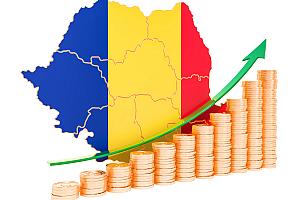EC improves forecast: Romania will have second-highest economic growth in EU this year

The European Commission (EC) has increased its growth estimates for Romania’s economy to 3.8% in 2020 and 3.5% in 2021, according to the Winter 2020 Economic Forecast. The expected economic growth for both 2020 and 2021 is 0.2 percentage points higher than in the Autumn 2019 Forecast (3.6% and 3.3% respectively).
Romania should thus record the second-highest economic growth in EU after Malta, whose economy is expected to increase by 4.0% this year. Robust economic growth is also expected in Ireland (3.6%), Poland (3.3%) and Hungary (3.2%). The economic growth in the EU is expected to remain rather constant, at 1.4% in 2020 and 2021, and the economies in the Euro area are expected to grow by 1.2% in 2020 and 2021. The German economy, the biggest in the EU, will see a recovery, from an estimated growth rate of 0.6% in 2019, to 1.1% in 2020 and 2021, according to the same document.
Romania’s economy continues to lose speed
“Economic growth in Romania eased further in 2019. Real GDP growth declined from a post-crisis peak of 7.1% in 2017 to 4.4% in 2018 and is expected to have moderated to 3.9% in 2019. Private consumption remained the main growth driver, the result of a tight labor market and high wage increases, particularly in the public sector,” reads the EC assessment on Romania’s economy.
While investment may have had a significant contribution to growth in 2019 supported mainly by construction, the net exports' contribution to GDP growth turned more negative in 2019 with both imports and exports declining. More sluggish external demand was the main cause of the fall in export growth and also led to a decline in industrial production.
“Real GDP growth is forecast to remain robust at 3.8% in 2020 and 3.5% in 2021. The significant fiscal stimulus planned in 2020 and 2021 is expected to give a new boost to private consumption while also stimulating imports. Investment is expected to remain strong in 2020, supported by construction and greater use of EU investment funds,” the EC’s economists expect.
The report also speaks about the reversal in early 2020 of measures introduced in December 2018 concerning the taxation of the banking and energy sectors is expected to favor private investment, but, just this week, the Senate rejected the Government’s ordinance that did that. The contribution of net exports is expected to remain negative over the forecast horizon, leading to a worsening of the already high current account deficit.
What are the main risks that could impact economic growth?
The EC also warns that the risks to the growth forecast are tilted to the downside. “The fiscal policy stance will be a key determinant of the evolution of economic growth in 2020 and 2021. A continuation of expansionary fiscal policies aggravating existing macroeconomic imbalances could affect investors’ confidence and lead to higher funding costs. Conversely, the start of much needed fiscal consolidation would contribute to the unwinding of the accumulated imbalances but would also result in somewhat lower economic growth over the forecast horizon. More legislative unpredictability or rapidly deteriorating fiscal deficit could also affect the business environment in Romania and have a detrimental effect on investment decisions,” the report explains.
As for the annual inflation rate in Romania, the European Commission expects this to decline to 3.4% in 2020 and 3.3% in 2021, after a 4.1% peak in 2018 and an annual rate of 3.8% in 2019.
The EC's Winter 2020 Economic Forecast is available here.
editor@romania-insider.com
(Photo source: ID 133672511 © Natanael Alfredo Nemanita Ginting | Dreamstime.com)
















